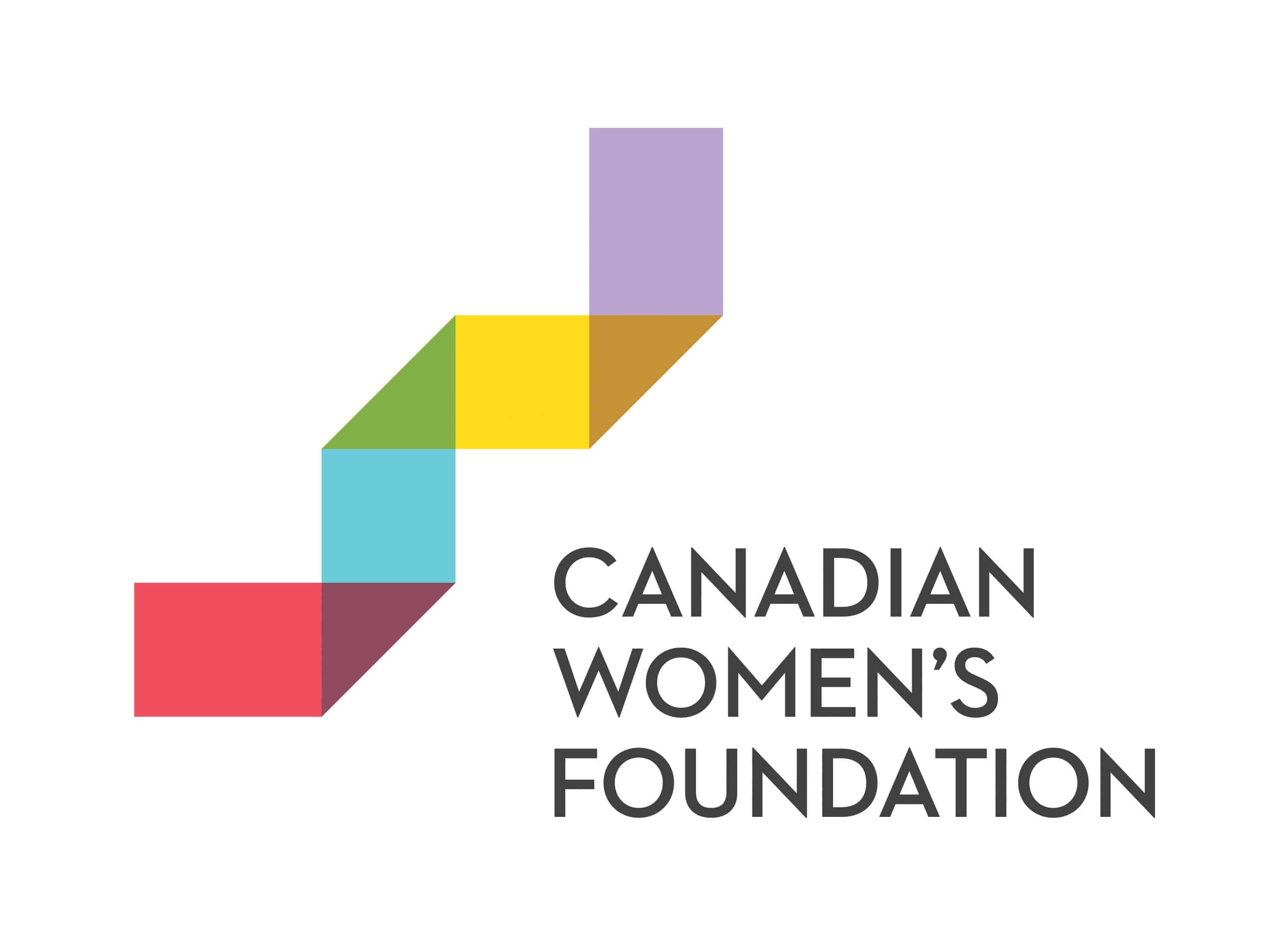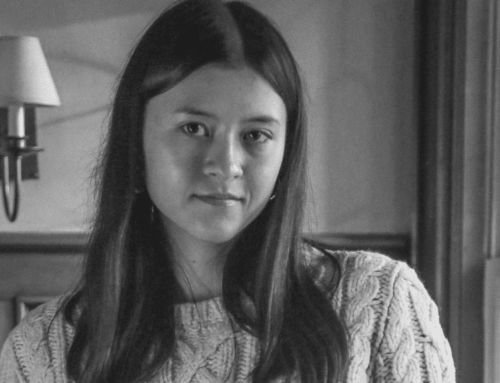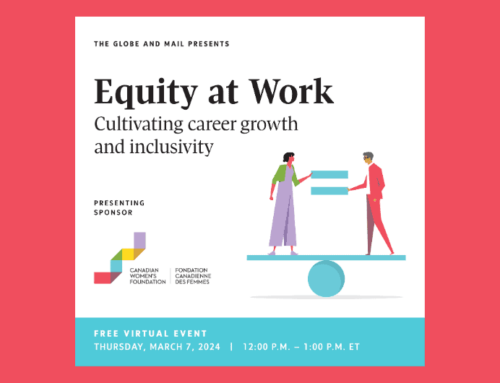
The following essay was written by the Canadian Women’s Foundation to express the Foundation's own Bold Vision for the year 2164.
The seven values described in this essay are grounded in our unique approach to helping women and girls to move out of poverty, out of violence, and into confidence. Our approach, which is further described here, has been developed through twenty-three years of funding programs for women and girls and investing in grassroots community organizations across Canada.
Thank you to all of our supporters who make our ground-breaking work possible. We know you share our vision of a more inclusive and equitable Canada!
The Canadian Women's Foundation's Bold Vision
In 1864, the same year twenty-three men met in Charlottetown to discuss the political union that would eventually become Canada, a woman named Rose Fortune died. She was ninety, but her age was just one of many remarkable things about her.
Rose had been born into slavery in Philadelphia and came to Canada when she was ten, escaping with her family to Nova Scotia as part of the Black Loyalist migration. To earn a living, she worked on the ferry wharves, transporting luggage for passengers in a wheelbarrow. Rose had a big personality and knew everyone, including the town’s leading citizens. In time, she became a self-appointed, one-woman police force, wielding a small stick to keep order on the wharves and enforce the curfews she herself created. One observer called her “an authoritative person,” adding: “She was evidently a privileged character.”
Today, Rose is recognized as Canada’s first female police officer. She was also an entrepreneur who launched a family business that lasted almost 100 years: after her death, her grandchildren expanded her baggage-handling business, graduating from wheelbarrow to wagon to truck, until it finally closed in 1960.
So have women in Canada come a long way, or do we only think we have because we don’t know enough about women like Rose?
If Rose was this empowered 150 years ago, why are we still fighting for women’s basic rights? Why do so many of us—especially racialized women—remain trapped by violence, poverty, and ridiculous stereotypes that limit our potential as human beings?
With Rose as our yardstick, we can immediately see we may not have come as far as we think. Why not?
We are not on an inevitable path to a more inclusive and equal society. Everyone says they want a better world, but the twenty-three men who met in Charlottetown in their silk top hats and cravats were not interested in improving the lives of people like Rose.
Although these fathers of pre-Confederation may have told themselves they were building a better future for everyone, they were driven by values that promoted hierarchy and inequality. These values were also behind one of the most tragic policies ever created in Canada’s history: just six years after the Charlottetown Conference, the first residential schools for Aboriginal children opened.
The processes and policies shaped by these values would ensure that political power in the new country of Canada would remain with propertied white men, and the impact of this legacy can be seen to this day.
Our actions are shaped by our values.
The collective values of a society run invisibly under its surface, much like the unseen currents in a wide river. We might not even notice they’re there, but they push and pull us every day, influencing what we do and say, what we believe to be true and correct—even what we believe to be possible. Each society’s values carry it inexorably to one future and not another.
As Canadian history clearly shows, many attempts to engineer a “better” future have either virtually ignored marginalized groups or caused them tremendous harm.
A more inclusive and equitable future will only emerge if we are guided by values grounded in inclusion and equality. That means they must inherently address the root causes of violence and poverty, and challenge gender, racial, and other stereotypes.
At the Canadian Women’s Foundation, our mission is to stop the violence, end poverty, and empower girls. Our work is driven by a set of values that’s been developed through two decades of partnership with community experts, volunteers and donors, and the women and girls who participate in the programs we fund.
We offer these values, illustrated through the following questions, as one possible road map to a more inclusive future.
Each question is designed to open a dialogue—with ourselves and with others—and to encourage us to reflect upon the often unconscious assumptions and motivations beneath our work.
We expect these questions to change over time as we continue to learn and grow. We look forward to refining and improving them in partnership with others.
1. AM I USING A GENDER LENS?
At the Canadian Women’s Foundation, our vision is: “Invest in women and girls, change everything.”
We make this bold claim because research has shown that improving women’s equality actually helps everyone. We call this “the ripple effect.”
Women are not a special interest group—we are 50% of the population. When we reach our full economic and social potential, everyone benefits.
When a woman gets the help she needs to escape violence, right away she and her children become safer. But her children are also less likely to experience violence when they grow up, and so are their own children. And when you also teach children to build healthier relationships, you stop the violence before it starts and the entire community becomes safer.
When you help a woman to move out of poverty, her children become healthier—both physically and mentally—and do better in school. Not only that, the whole family becomes less reliant on government assistance and can pay more taxes and contribute more to society.
As you read this, you may be thinking, “But men need help too.” Somehow, groups that raise money for the arts never get asked, “Why aren’t you supporting amateur sports?” Yet every day, the Canadian Women’s Foundation is challenged for daring to focus on women and girls. That’s because this focus directly challenges patriarchy, which says men are the natural centre of society.
Using a gender lens means looking at the world through women’s eyes—just 50% of the time—and reviewing decisions in the light of their potential impact on women and girls.
When you view part-time work through a gender lens, for example, you immediately see that 70% of all part-time workers in Canada are female. Research shows that most women work part-time because they cannot successfully juggle their domestic responsibilities plus a full-time job. At first glance, this appears to be a personal choice but is actually a systemic gender issue based primarily on the chronic lack of affordable childcare and the absence of family-friendly workplace policies.
Canadian employment practices and government policies are still mired in the outdated family model of a male breadwinner and a female homemaker. Creating policies and practices informed by a gender lens will have a ripple effect: it will help women reach their full economic potential, improve the lives of all working parents, and strengthen Canada’s entire economy.
2. AM I ADDRESSING THE GREATEST NEEDS?
It’s true women and girls in Canada have come a long way. Most of us enjoy freedom and opportunity that Rose Fortune probably would have found hard to believe. In almost every aspect of our lives – family, career, education – most of us make our own choices. We have taken on leadership in business, politics and community life. Thanks to the hard work of the women who have come before us, we have a lot to celebrate.
However, there is still much work to do. Half of all women and girls experience physical or sexual violence in their lifetime, income inequality in Canada is growing, and the devastating impacts of residential schools continue to harm the first peoples of this land. Thousands of women across Canada are raising their children alone in poverty. Certain groups of women—newcomer women, Aboriginal women, racialized women, single mothers, women with disabilities—are especially likely to be poor.
Progressive social change does not occur when we focus on those at the top of the social heap; that just protects the status quo. Achieving social inclusion and equality starts with focusing on those who are most the marginalized.
Rosemary Brown, one of our founding mothers and the first black woman in Canada to be elected to a provincial legislature, put it this way: “Until all of us have made it, none of us have made it.”
3. AM I LISTENING MORE THAN I AM SPEAKING?
We believe the best solutions to social and economic problems are created by those closest to the problems. Yet too often, those who hold social power make decisions without involving the people who will be most affected.
As we organize for change, we must not only actively recruit their participation but also actively address any barriers to their meaningful participation.
For example, we have created a 23-member Task Force on the Trafficking of Women and Girls in Canada to develop recommendations to end sex trafficking in Canada. Survivors of sex trafficking are members of the task force, and more survivors were also invited to a full-day round-table discussion to share their expertise; their input will be instrumental in shaping the task force recommendations. Potential barriers to the full participation of survivors were identified ahead of time—everything from childcare to food allergies to transportation—and strategies were created to address them. An honoraria was provided to recognize the value of their time. If the survivors were asked to share their personal stories, counseling and follow-up support were also provided.
Marginalized groups must be a genuine part of decision-making processes not out of sentimentality or even because it’s the right thing to do, but because their voices are essential to creating good solutions. If we want to end sex trafficking in Canada, we must recognize the ultimate expert is not a police officer, a lawyer, or a social worker, but a woman who has been trafficked.
However, the people who are closest to the problems are also the ones most likely to question the validity of our processes, to name hard truths, and to challenge our underlying values. It is essential we engage as genuine partners and listen with an open heart.
4. AM I BUILDING ON ASSETS?
In our work we don’t see women as victims, but as powerful people who are being temporarily held back by systemic discrimination.
As with all oppressed groups, the impact of systemic discrimination often manifests in personal behaviours that appear unique to the individual. For example, many women exhibit a chronic lack of confidence and tend to focus on their flaws rather than their strengths. But women also have many inherent strengths, including listening, collaboration, and emotional intelligence. It is only recently, however, that these traits have been valued by society.
In our work, we’ve learned to counter the impact of systemic discrimination by taking a strength-based positive approach.
For example, for a woman living on a low income, learning to recognize her ‘hidden’ assets is often the catalyst for taking those first difficult steps towards financial independence. Each woman who attends one of the economic development programs we fund is asked to fill out a special questionnaire that captures ALL of her assets—not just how much money she has, but also things like social networks, education, physical health, and parenting skills. For many women, this is a tremendously empowering process. The next step is learning how to leverage each of these assets in order to reach her financial goal. This approach is grounded in the Sustainable Livelihoods framework we’ve been developing over the last fifteen years.
Building on assets isn't about being overly optimistic or ignoring problems. It isn't even about offering a ‘hand up,’ which can sometimes be experienced as disempowering.
Building on assets is about creating processes that empower marginalized groups to recognize and leverage their existing strengths and to take control of their own lives. In the end, that allows us all to create stronger solutions to economic and social problems.
5. AM I THINKING HOLISTICALLY?
We believe the best way to solve complex economic and social problems is to look at them from multiple angles. To create genuine change, we must address issues along their whole continuum.
Complex issues such as violence against women can’t be addressed with simple solutions. To stop the violence, we fund emergency shelters so women and their children can escape immediate danger, but we also fund programs that teach teens—both boys and girls—to create healthier relationships over the long-term. We encourage governments to create stronger anti-violence policies and we also fund research into best practices for service providers. We support grassroots organizations to network and learn from one another, and we also speak out publicly to demand action and an end to victim blaming. We also encourage women and girls to share their personal experiences, by offering different venues for them to speak out or publish their stories.
We take the same approach to helping women move out of poverty. The programs we fund provide ‘wrap-around’ services in order to help women address whatever issues are keeping them from achieving financial independence. This can include factors such as domestic violence, childcare, education, isolation, and self-confidence. The programs help women to identify the most immediate barriers to their economic independence and then get connected to relevant community services.
For example, if a woman is experiencing violence it will likely be very difficult for her to focus on an employment search. However, once she and her children are safe and stabilized, it is usually easier to think about building a new future. Although helping a woman find shelter and supportive counseling may not, at first glance, seem related to helping her to move out of poverty, it is often the essential first step in her journey to financial independence.
To create a better future, we must acknowledge the complex roots of social and economic inequality and ensure the solutions we promote address the realities of women’s lived experiences.
6. AM I SHARING POWER?
Patriarchy has been called “the religion of power.”
Its central concept is hierarchy, where people are sorted into categories of higher and lower worth. Both men and women receive many messages—both blatant and covert—that men deserve more social status than women.
Besides gender, these categories also include race, age, income, education, sexual orientation, physical and mental ability, appearance, religious beliefs, language, and others. Those deemed to be of lower worth are subject to formal and informal control through all manner of abusive behaviours: sexual, physical, emotional, financial, and spiritual.
We have all absorbed these messages, and it takes hard work to unlearn them. The first step, as always, is to become conscious of them. As the saying goes: “A fish doesn’t know it’s in water.”
Here’s a simple example of sharing power. We fund dozens of programs that are designed to empower adolescent girls, and all of them are ‘girl-led.’ The girls themselves get to choose the program activities, decorate the program space, prepare and present some of the program content, and take on leadership in many other ways. Although evaluation shows this strategy is highly effective with many different populations, in many community organizations this approach is still the exception and not the rule.
Sharing power with girls requires overcoming our bias that adults know best and should be in charge. It also demands that we let go of our desire to control everything. Although this is usually driven by a genuine desire for things to go well, it can be very disempowering to participants.
Creating a more inclusive and equal future requires us to become more aware of the dynamics of power in actions both large and small. When organizing a community meeting, for example, power is expressed through decisions such as who creates the agenda (an act of power and influence) and who takes notes (an act that carries much less social power).
When power is genuinely shared, participants are much more likely to feel ownership of the process and a spirit of collaboration is more likely to flourish.
7. AM I BUILDING A COMMUNITY?
Women are different in so many ways, but we all experience discrimination based on our gender. Ending this discrimination can be the common goal we share.
But in order to work together, we must honour both our commonalities and our differences.
For example, at one recent workshop an Aboriginal woman who worked at a community organization was sharing the barriers that often prevent Aboriginal women from accessing services. In response, another staff person from a different organization that serves a non-Aboriginal population stood up and said excitedly: “Yes, this is exactly what the women in my community experience!”
In our eagerness to find common ground, it can be easy to unconsciously erase our differences. In doing so, we may marginalize the experience of others.
We must take on the hard, ongoing work of becoming aware of our privilege, whether it’s based on race, income, sexual orientation, physical ability, or other factors. We must also resist the emotional urge to retreat into either guilt or defensiveness about our privilege. We don’t choose to have privilege, it is simply assigned according to the dominant values of our culture. Neither can we refuse to accept it, or to give it away. We can only choose how we use it.
Privilege gives us the power to describe problems, create strategies, shape solutions, and access resources. When it comes to community building, the question becomes: “Are we using our privilege to maintain the status quo, or to work for genuine change?”
At the Canadian Women’s Foundation, we want every woman and girl to live free from violence, poverty, and stereotypes that limit her potential.
We believe it is possible to build a more inclusive and equal Canada that helps us to reach these goals. But first we must bring our assumptions and motivations to the surface, ask ourselves in whose interest we are acting, and whether we are guided by values that promote inclusion and equality.
The values that guide our own work are: use a gender lens, address the greatest need, listen deeply, build on assets, think holistically, share power, and build community.
We respectfully offer these values as one possible roadmap to a future Canada where political, social, and economic power are equally shared.
In that future, every woman—even those as disenfranchised as Rose Fortune—will have the opportunity to achieve her full potential







